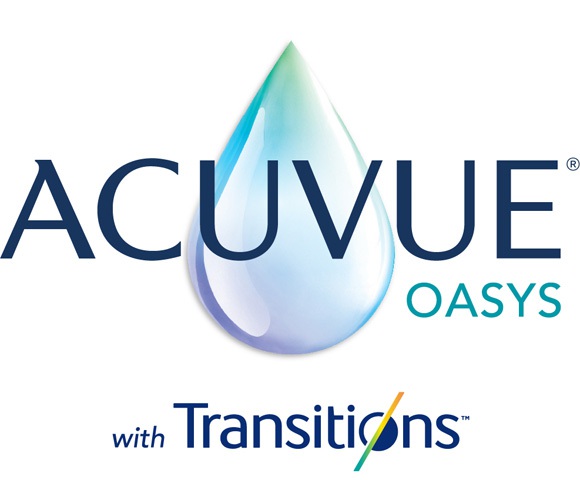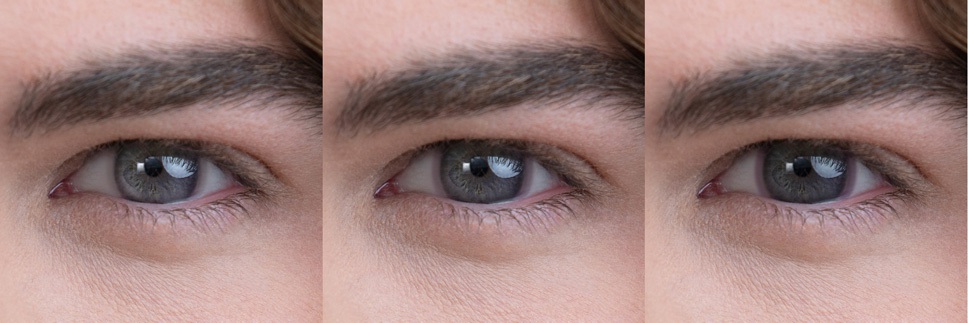
The Contact Lens That Knows Light™
ACUVUE® OASYS with Transitions™ is a first-of-its-kind1 contact lens that goes beyond vision correction2, seamlessly adapting to changing light.ᵻ,3 By automatically balancing the amount of indoor and outdoor light entering the eye, including filtering blue light* and blocking UV raysβ,^,2,4, ACUVUE® OASYS with Transitions™ helps reduce the stressful impact that light can have on patients’ eyes.**,3
Key Patient Benefits
- Less squinting when subjected to bright lightλ,3
- Helps patients’ vision recover from bright light up to 5 seconds fasterλ,3
- Reduces halos and starbursts at nightλ,x,3
Learn more about ACUVUE® OASYS with Transitions™
See the contact lens in action
Squint Less. See More.™ λ
Now that ACUVUE® OASYS with Transitions™ has arrived, it’s time to start the conversation with patients about the impact bright light can have on vision.

64% of people indicate they are bothered by bright light daily5
Of those bothered by light, 94% use compensating behaviors, such as squinting, to help manage it5
Even though most patients experience issues with light, only 34% have told their eye doctors5
Read more about light filtering and visual performance
These articles will help enhance your understanding of how changing and challenging light conditions impacts your patients’ visual experience and satisfaction.
Visual Satisfaction
Read now
How Light Filtering Can Affect Visual Performance
Read now
How Visual Comfort Contributes to the Overall Contact Lens Experience
Read now
How to Help Patients Manage the Dark Side of Light
Read now
Answering patients’ questions
Now that ACUVUE® OASYS with Transitions™ is available, your patients are going to want to learn more about this breakthrough contact lens experience. Here are three of the most commonly asked questions. You can download more FAQs to share with your office below.
Q: How will the lenses look on my eye?
A: ACUVUE® OASYS with Transitions™ was specifically designed to provide patient benefitsᵻ, while minimizing the change to the eyes' appearance2.

Q: How quickly do they change?
A: The lenses begin to darken immediately, as soon as they are exposed to sunlight. When moving from outdoors to indoors, they quickly fade from dark to clear within 90 seconds2.
Q: How should the lenses be stored?
A: To help maximize lens performance, lenses should be stored away from direct sunlight when not in use.
Share the exciting news
Use #SquintLessSeeMore on your social channels to let your patients know about ACUVUE® OASYS with Transitions™.
ᵻ Ability to see comfortably in bright light
* Calculated per ISO-8980-3 for 380-460nm (Blue Light Hazard Function, B(l))
** By helping your vision recover from bright light faster and reducing squinting, compared to the leading reusable contact lens.
λ Compared to ACUVUE® OASYS with HYDRACLEAR® PLUS.
x Clinical trials have shown those age 40-65 may be more likely to experience this benefit in the inactivated ACUVUE® OASYS with Transitions™ lens
1 FDA press release: FDA clears first contact lens with light-adaptive technology https://www.fda.gov/newsevents/newsroom/pressannouncements/ucm604263.htm, April 10th 2018.
2 JJV Data on File 2018. Definition of ACUVUE® OASYS with Transitions™ Light Intelligent Technology™
3 JJV Data on File 2018: ACUVUE® OASYS Brand Contact Lenses with Transitions™ Light Intelligent Technology - Objective Clinical Claims
4 JJV Data on File 2018. Material Properties: ACUVUE® OASYS Brand Contact Lenses with HYDRACLEAR® Plus, ACUVUE® OASYS with Transitions™ Light Intelligent Technology, and Other Reusable Contact Lenses
5 JJV Data on File 2018. Substantiation for Bothersome Light Need Prevalence.
β Helps protect against transmission of harmful UV radiation to the cornea and into the eye.
^ WARNING: UV-absorbing contact lenses are NOT substitutes for protective UV-absorbing eyewear such as UV-absorbing goggles or sunglasses because they do not completely cover the eye and surrounding area. You should continue to use UV-absorbing eyewear as directed.
NOTE: Long-term exposure to UV radiation is one of the risk factors associated with cataracts. Exposure is based on several factors such as environmental conditions (altitude, geography, cloud cover) and personal factors (extent and nature of outdoor activities). UV-blocking contact lenses help provide protection against harmful UV radiation. However, clinical studies have not been done to demonstrate that wearing UV blocking contact lenses reduces the risk of developing cataracts or other eye disorders. Consult your eye care practitioner for more information.
These lenses are not a replacement for sunglasses.
ACUVUE® OASYS is a trademark of Johnson & Johnson Vision Care Middle East, Inc. Transitions™ is a registered trademark, the Transitions™ logo, Transitions™ Light Intelligent Technology™ and Transitions Light Intelligent™ Lenses are trademarks of Transitions Optical, Inc. used under license by Transitions Optical Limited. @ Johnson & Johnson Medical 2019
